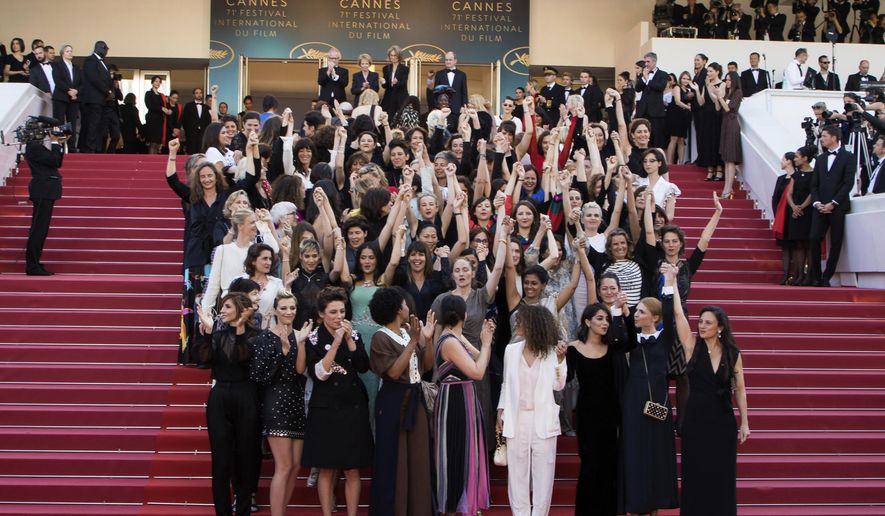NEW YORK (AP) - After Rashida Jones exited Pixar’s “Toy Story 4” in 2017 she noted that the studio, after 25 years in business, had not made a single feature film directed by a woman, calling it “a culture where women and people of color do not have an equal creative voice.”
So when Pixar co-founder and CEO John Lasseter stepped down earlier this year after acknowledging “missteps” in his behavior with employees, he was more than another casualty in the long list of film industry power players toppled by the #MeToo movement. He was a symbol of a Hollywood culture that is dying - or at least under siege.
“These giant, multi-billion-dollar companies, they all need a makeover,” Jones now says. “And I think people are starting to recognize that. To me, that is a victory. Brave people have come forward and made this whole machine start to question itself.”
In the year since sexual assault allegations surfaced against Harvey Weinstein, Hollywood has been soul-searching. The Weinstein case - along with those of Kevin Spacey, CBS’ Les Moonves, Amazon Studios’ Roy Price and many others - laid bare the painful reality for countless women in a movie industry where gender inequality was systematic and pervasive.
The #MeToo movement has gone far beyond the movies, but Hollywood remains ground zero in a cultural eruption that began 12 months ago with the Weinstein revelations, published by The New York Times and The New Yorker. Through interviews with actresses, filmmakers, producers and others, The Associated Press sought to assess whether it is a palpably different place today than a year ago.
“Definitely there’s been a seismic shift,” says Carey Mulligan, the British actress. “I feel like if I was walking down the street and someone said something or did something outside the bounds of appropriate, I would feel so much more empowered to tell them to f—- off while before I probably wouldn’t. Those sort of gray area things are now no longer gray areas.”
Researchers at the University of Southern California’s Annenberg Inclusion Initiative have not yet found any marked difference in female representation on screen, behind the camera or in the boardroom. At least anecdotally, studios and production companies are more aggressively hunting for female filmmakers. Salma Hayek has said her production company has been struggling to find female writers and directors. They’re all already booked.
“Everybody’s looking for their female content,” says Jones, whose documentary “Quincy” was recently released by Netflix.
Measuring cultural change in a far-flung, $50 billion industry is difficult. Many of the epicenters of the movie business - red carpets, film festivals, award shows - have struck a different tone in the wake of Weinstein. But some see a limit to what such demonstrations can accomplish.
“At least it’s out in the open,” says actress Viola Davis. “My fear is that people feel like the focus of sexual assault is just on actresses in Hollywood and studio execs like Weinstein.”
She worries about the movement becoming limited to “outing the men, putting them in the court of public opinion and just destroying their careers. It’s way bigger than that. One out of every 4 women - and there’s some statistics that say it’s 1 out of 3 - will be sexually assaulted by the time they’re 18.”
Like many revolutions before it, #MeToo has sought to codify permanent changes. The Academy of Motion Picture Arts and Sciences instituted a code of conduct and booted not only Weinstein but Bill Cosby and Roman Polanski.
In addition, “inclusion riders” - contractual agreements to try to hire diverse casts and crews - have proliferated. Last month, Warner Bros. became the first major studio to make a similar pledge. Many prominent film festival directors have also signed agreements to push their executive boards to gender parity.
In an attempt to abolish the “casting couch” culture that Weinstein allegedly exploited, The Screen Actors Guild created guidelines - supported by the producers’ guild - instructing producers and executives to refrain from holding professional meetings in hotel rooms and homes.
“People have been talking for decades about how terrible the casting coach is. Even with that knowledge, it was still going on. There was nothing concrete, written down saying: unacceptable,” says Gabrielle Carteris, president of SAG-AFTRA. “Us putting that in a guideline was so empowering for members because we’ve all been put in that situation.”
The guidelines will soon be expanded to establish rules around nudity on set.
But the movie business still lacks a single, industry-wide reporting system for sexual harassment and assault, though a committee led by Anita Hill is working to create one. Time’s Up, which is spearheading much of the pressure put on Hollywood, has also amassed a $21 million legal-defense fund for women who suffer from harassment and assault at work in any industry.
Yet with everything that has happened in the last year, most observers say not nearly enough has been done to address long-term inequalities in Hollywood. Kirsten Schaffer, executive director of the advocacy group Women in Film, believes that the path to ending harassment is through parity. Evidence backs her up.
“The more women we have in leadership positions, the less likely the incidents of harassment,” Schaffer says. “We’ve been living in a sexist, racist society for hundreds of thousands of years. We’re not going to undo it in a year.”
___
You can find a fuller version of this story here: http://apne.ws/ZODNuf8




Please read our comment policy before commenting.